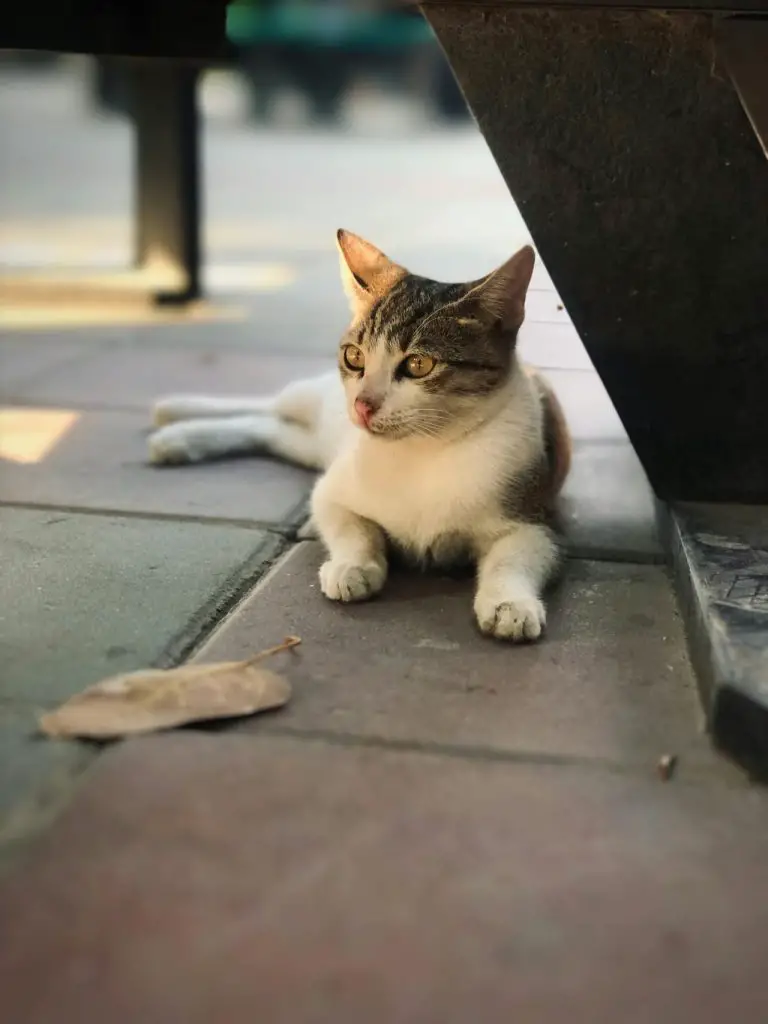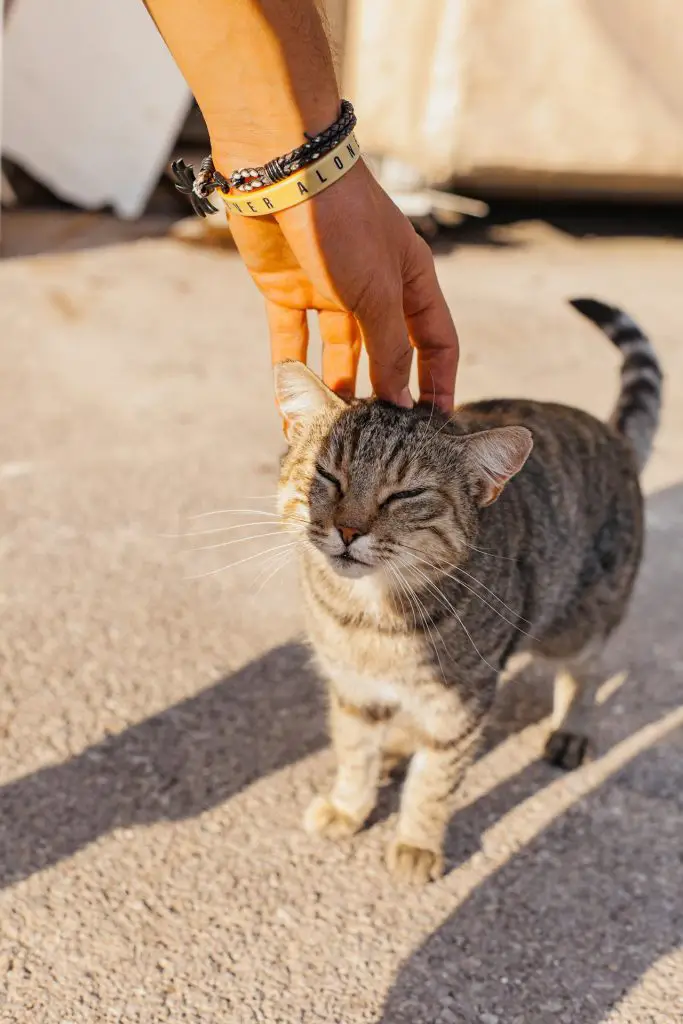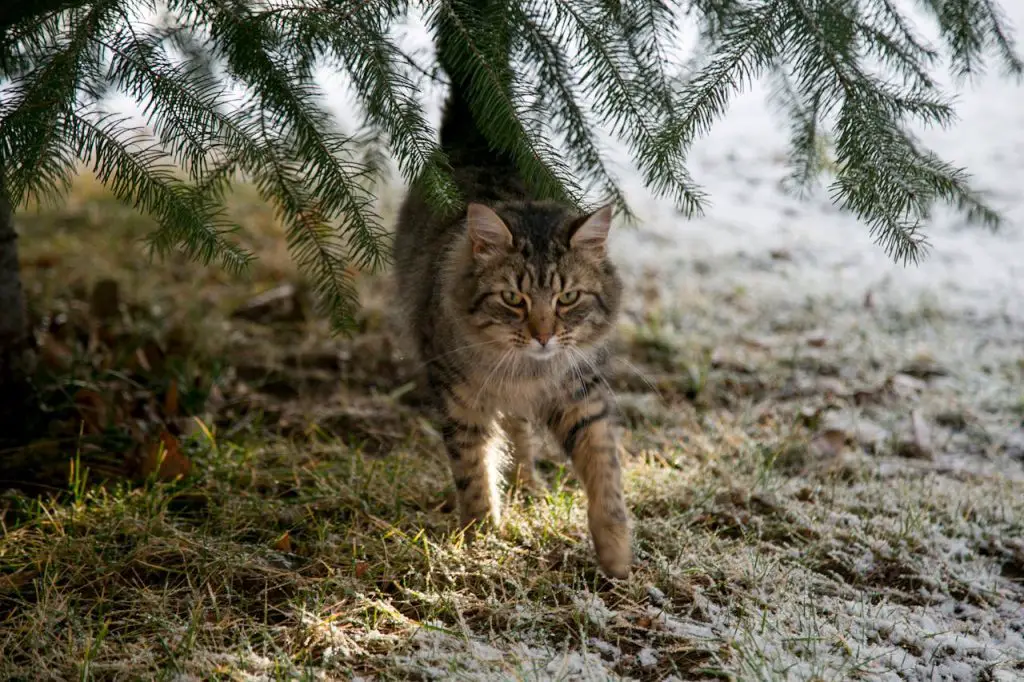
To train a feral cat, you’ll need to establish a foundation of trust, starting with creating a safe and welcoming environment that acknowledges the cat’s natural instincts and fears. Begin by preparing the outdoor space, removing hazards and providing enrichment activities. Use food as a trust-building tool, offering a consistent feeding schedule and gradually increasing your visibility during meals. As the cat becomes more comfortable, create a safe shelter and use positive body language to ease its anxiety. With patience and persistence, you can help the cat overcome its fears and build a strong bond – and that’s just the beginning.
Table of Contents
Key Takeaways
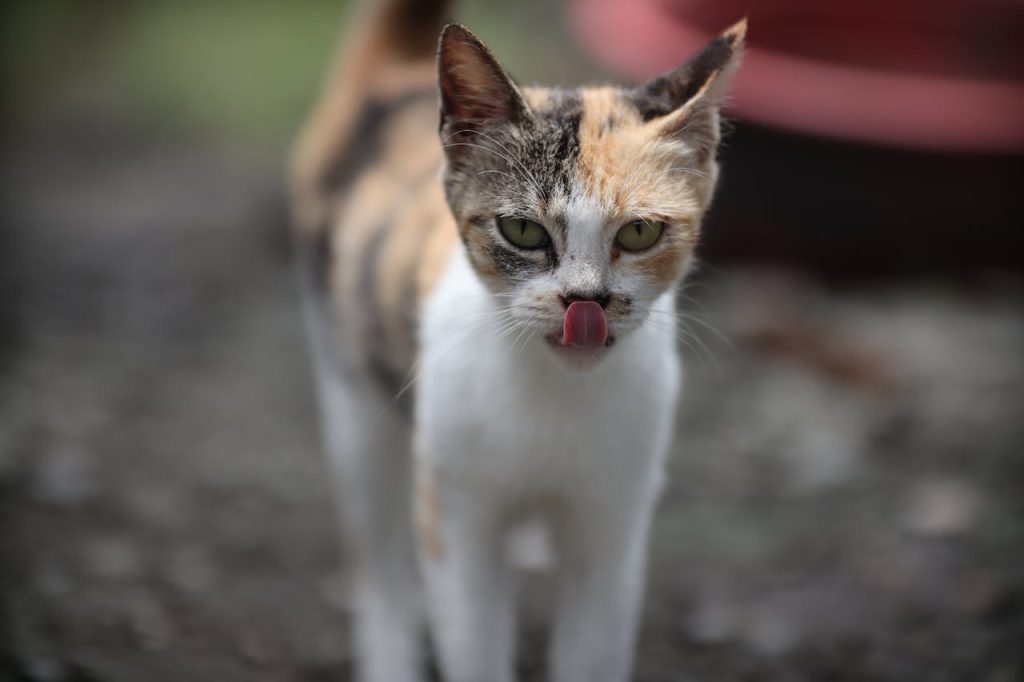
- Feral cats require gradual socialization through trust-building, starting with establishing a consistent feeding schedule and providing a safe shelter.
- Positive body language, such as calm movements and gentle voice, helps ease the cat’s anxiety and fosters comfort.
- Desensitization techniques can reduce fear aggression by gradually exposing the cat to feared stimuli at a controlled distance.
- Consistent human interaction, positive reinforcement, and rewarding desired behavior are crucial for maintaining socialization progress and strengthening trust.
Preparing the Outdoor Space
Before bringing a feral cat onto your property, you’ll need to assess and modify the outdoor space to guarantee it provides a safe and welcoming environment.
This is vital for the cat’s well-being and your own success in training them.
Take a walk around your yard and remove any hazardous materials or objects that could harm the cat. Check for toxic plants, sharp objects, and loose wires. See our post on how to keep an outdoor cat safe.
You’ll also want to take into account outdoor enrichment activities that’ll stimulate the cat’s natural behaviors, such as hunting, climbing, and scratching.
This post contains affiliate links. However all the information provided on this site are my own honest opinions. See more in Disclaimer.
Add some toys, scratching posts, and elevated areas where the cat can observe its surroundings.
Ascertain environmental safety by blocking access to areas you don’t want the cat to enter, like gardens or neighbor’s yards.
Establishing Trust With Food
Initially, you’ll use food as a foundation for establishing trust with the feral cat, gradually helping it associate your presence with a reliable source of nutrition.
To start, observe the cat’s food preferences by offering a variety of healthy options, such as wet or dry food, and noting which ones it favors.
By catering to its tastes, you’ll show that you’re invested in its well-being.
Next, establish a consistent feeding schedule to provide a sense of stability and predictability. Feed the cat at the same times each day, so it learns when to expect your visits.
Begin by leaving food in the same spot each time, allowing the cat to eat without feeling threatened by your presence.
As the cat becomes more comfortable with your routine, you can gradually increase your visibility during meals, speaking calmly and moving slowly to avoid startling it.
Over time, this positive association with food will lay the groundwork for building trust and help the cat grow more comfortable with your presence.
Creating a Safe Shelter

By providing a warm, dry, and draft-free enclosure, you can create a safe shelter that becomes a sanctuary for the feral cat, helping to mitigate stress and foster a sense of security.
When selecting shelter materials, consider using straw or hay as bedding, as these provide insulation and comfort.
You’ll also want to verify the shelter is well-ventilated to prevent moisture buildup.
A sloping roof and a lip around the entrance can help with weather protection, keeping rain and snow out.
It’s essential to place the shelter in a quiet, secluded spot, such as behind a bush or in an area with minimal human traffic. This will help the cat feel safe and relaxed.
As you construct the shelter, consider the cat’s size and mobility.
Make sure the entrance is large enough for the cat to enter comfortably and that the shelter is large enough for the cat to stand up, turn around, and lie down.
With a safe and cozy shelter, the feral cat will be more likely to trust their surroundings and begin to form a bond with you.
Using Positive Body Language
Your body language plays a crucial role in establishing trust with the feral cat, so it’s important to exhibit calm and gentle movements that help the cat feel at ease.
By doing so, you’ll be able to communicate effectively with the cat and build a strong bond. Feline communication is primarily non-verbal, and cats are highly attuned to body language.
To use positive body language when interacting with a feral cat:
- Move slowly and deliberately to avoid startling the cat.
- Keep your voice low and gentle to convey a sense of calm.
- Maintain a relaxed posture, avoiding direct stares or aggressive gestures.
- Let the cat approach you and initiate contact, rather than reaching out to touch or pet them.
Managing Fear Aggression
As you establish trust with a feral cat through positive body language, it’s equally important to recognize and address the underlying fear aggression that can arise when the cat feels threatened or scared.

You’ll need to identify the cat’s fear triggers, which can be anything from loud noises to sudden movements, and develop strategies to mitigate them.
Desensitization techniques are particularly effective in managing fear aggression.
By gradually exposing the cat to the feared stimulus at a controlled distance or intensity, you can help the cat become comfortable and confident.
For example, if the cat is fearful of loud noises, you can start by playing a recording of the noise at a low volume, then gradually increase it while providing treats and reassurance.
It’s essential to approach this process patiently and carefully, as sudden or intense exposure can exacerbate fear aggression.
By acknowledging and addressing the cat’s fear triggers, you can create a safe and supportive environment for the cat to thrive.
Gaining Indoor Access Gradually
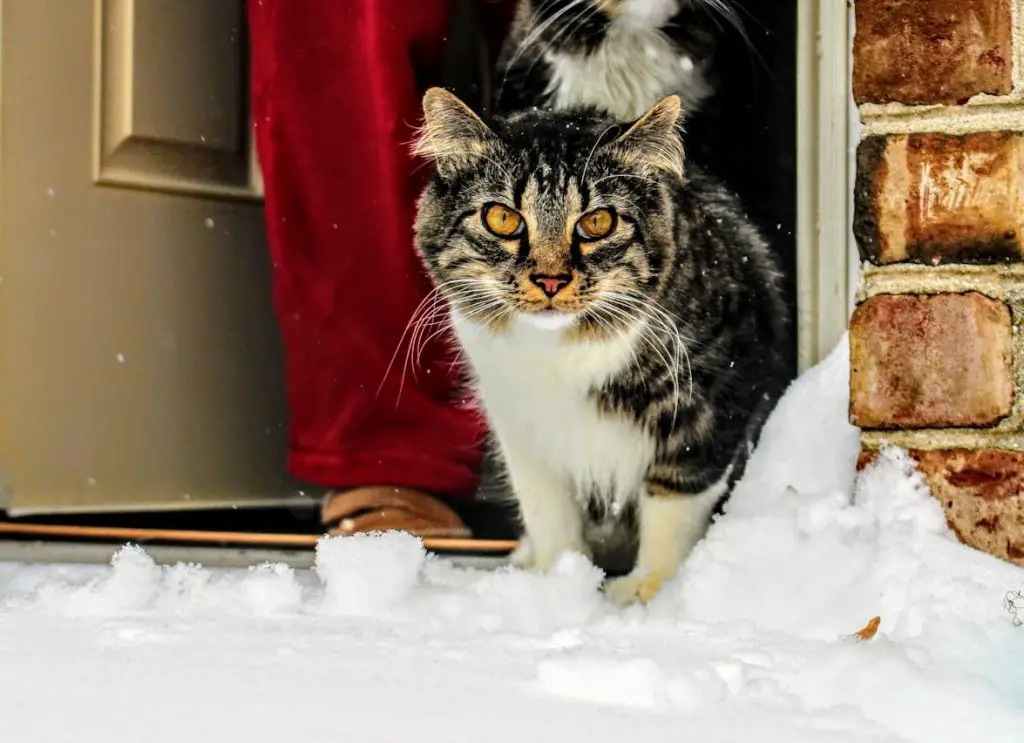
Gradual indoor access is a critical milestone in feral cat training, allowing the cat to become comfortable with an indoor environment at its own pace.
You’ll want to start by letting the cat explore the outdoors near your home, while providing food and shelter in the same area.
Trending in Cats:
As the cat becomes more comfortable with your presence, you can begin to encourage it to enter your home through a door or window.
Make sure to move at the cat’s pace, as rushing this process can lead to fear and mistrust.
Some key considerations for gradual indoor access include:
- Providing a quiet and safe space for the cat to acclimate to the indoor environment
- Minimizing loud noises and stressful stimuli
- Offering familiar scents and objects from the outdoors
- Supervising interactions between the cat and other pets or family members
Maintaining Socialization Progress
Now that your feral cat is more comfortable indoors, you’ll want to focus on maintaining the socialization progress you’ve made.
Consistent human interaction is key to helping your cat feel at ease with people, so set aside dedicated time to engage with them each day.
Consistent Human Interaction
Your continued interaction with the feral cat plays an important role in maintaining its socialization progress, so it’s essential to establish a consistent routine that fosters trust and encourages positive behavioral responses.
As you interact with the cat daily, focus on building a sense of security and familiarity. You can achieve this by:
- Providing food and water at the same times each day, so the cat learns to rely on your daily routines.
- Setting aside time for interactive playtime, such as playing with toys or laser pointers, to stimulate the cat’s natural hunting instincts.
- Speaking calmly and gently to the cat, allowing it to associate your voice with positive interactions.
- Allowing the cat to initiate contact, such as rubbing against your leg or nuzzling your hand, to respect its boundaries.
Rewarding Desired Behavior
By positively reinforcing desired behaviors, you can encourage the feral cat to continue its socialization progress, ultimately leading to a more trusting and affectionate relationship.

One effective method is clicker training, which associates a distinct sound with a reward, such as treats or praise.
When the cat exhibits a desired behavior, like approaching or tolerating touch, you click the device and immediately provide a treat.
This precise timing allows the cat to connect the behavior with the reward.
Treat timing is essential in clicker training. Make sure that the reward follows the desired behavior instantly, so the cat can make the association.
As the cat becomes more comfortable, you can gradually increase the time between rewards, fostering a stronger understanding of the desired behavior.
Consistency is key; use the same clicker and reward each time the cat exhibits the desired behavior.
By reinforcing these positive interactions, you can develop a more trusting and affectionate bond with the feral cat, setting the stage for a successful socialization process.
With patience and persistence, you can help the feral cat overcome its fears and become a loving companion.
Frequently Asked Questions
You’re wondering if a feral cat’s hunting instincts remain strong even with regular human feeding. Research suggests that, yes, they will still hunt, as their feeding habits are driven by instinct and not just hunger.
You’ll name a feral cat during training by using positive reinforcement, such as treats and affection, when it responds to a chosen name. Effective naming strategies include repeating the name, associating it with routines, and being patient.
You’ll find that feral kittens can be trained faster than older feral cats because they’re more receptive to socialization techniques and human interaction, especially when placed in foster care at a young age.
You’re wise to worry about disease transmission between feral and domestic cats. As you interact with feral cats, it’s essential to remember that they can carry diseases, making vaccination importance a top priority for your domestic pets.
Facing feral fates, you must weigh the ethical considerations: releasing a trained feral cat may jeopardize its long-term welfare, as it may not adapt back to wild life; prioritizing its safety and well-being is essential.
Conclusion
As you’ve successfully tamed the feral cat, remember that socialization is an ongoing process.
Like a gardener nurturing a delicate flower, you’ve planted the seeds of trust, and with gentle care, they’ll continue to bloom.
By following these steps, you’ve not only changed the cat’s life but also yours, as the rewards of compassion and patience are immeasurable.
Stay committed, and this once-wild creature will forever flourish as a loving companion.


